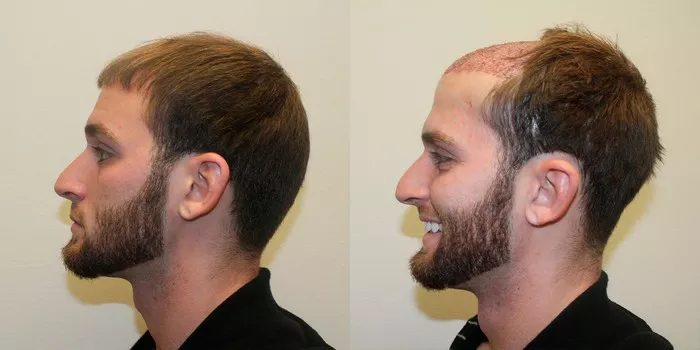For individuals seeking a more permanent solution to hair loss, Follicular Unit Transplantation (FUT) has long been a trusted method. This surgical procedure involves the removal of a strip of scalp tissue, extraction of hair follicles, and their meticulous transplantation into areas with thinning or balding hair. One common question that arises is: How long does a FUT hair transplant last? In this article, we will explore the factors influencing the longevity of FUT results and what individuals can expect post-procedure.
Understanding FUT Hair Transplant
FUT is a surgical hair restoration technique that has been in practice for several decades. During the procedure, a strip of scalp containing healthy hair follicles is surgically removed from the donor area, typically located at the back or sides of the head. The extracted strip is then dissected into individual hair grafts, which are subsequently implanted into the recipient area, where hair loss is more noticeable.
Factors Influencing Longevity
The following are factors that influence longevity:
1. Graft Survival Rate: The longevity of FUT results is influenced by the survival rate of the transplanted hair grafts. Skilled surgeons take great care during the extraction and implantation processes to ensure the viability of each graft. The higher the survival rate, the more enduring the results.
2. Natural Hair Growth Cycle: Understanding the natural hair growth cycle is crucial. After the transplant, the transplanted hair initially sheds, and new hair growth typically starts within a few months. The hair then follows the normal growth cycle, with periods of growth, rest, and shedding. The longevity of FUT results is tied to the natural progression of this growth cycle.
3. Postoperative Care: Proper postoperative care significantly contributes to the lasting success of a FUT hair transplant. Following the surgeon’s instructions for cleaning, avoiding strenuous activities, and taking prescribed medications is vital. A healthy recovery phase sets the stage for the long-term success of the procedure.
4. Individual Genetic Factors: Each person’s genetic makeup plays a role in determining the longevity of FUT results. The transplanted hair retains the characteristics of the donor area, which may be more resistant to the effects of hormones that contribute to pattern baldness. However, individual genetic factors can influence how the transplanted hair interacts with the recipient area over time.
5. Progression of Hair Loss: While FUT provides a significant and lasting solution to hair loss, it’s essential to consider the potential progression of hair loss in other areas. Since FUT utilizes donor hair from specific areas that are less susceptible to balding, the transplanted hair is generally more resistant to further loss. However, the native hair surrounding the transplant area may continue to experience natural progression, influencing the overall appearance over time.
Longevity of FUT Results
FUT hair transplants are considered a permanent solution to hair loss. The transplanted hair is taken from areas genetically resistant to balding, making it less susceptible to the factors that contribute to pattern hair loss. Once the transplanted hair establishes itself and follows its natural growth cycle, the results can last a lifetime for many individuals.
Tips for Prolonging FUT Results
Here are tips for extending FUT results:
1. Maintain a Healthy Lifestyle: A healthy lifestyle contributes to overall well-being, and this includes the health of your hair. A balanced diet, regular exercise, and proper hydration support the vitality of your hair, including the transplanted follicles.
2. Use Recommended Hair Care Products: Following the surgeon’s recommendations for hair care products is crucial. Using mild shampoos, avoiding harsh chemicals, and protecting the scalp from excessive sun exposure contribute to the long-term health of both transplanted and native hair.
3. Regular Follow-ups with the Surgeon: Regular follow-up appointments with the surgeon allow for monitoring the progress of the FUT transplant. Any concerns or changes can be addressed promptly, ensuring that any issues are addressed proactively.
4. Consider Additional Treatments: Depending on individual needs, individuals may explore complementary treatments to support the longevity of FUT results. These may include medications such as minoxidil or finasteride, which can help maintain the health of existing hair.
See Also: The Cost of Dr. Leonard’s Hair Transplant: A Quick Guide
Conclusion
In summary, the longevity of FUT hair transplant results is influenced by various factors, including the survival rate of transplanted grafts, the natural hair growth cycle, postoperative care, genetic factors, and the progression of hair loss in other areas. While FUT is considered a permanent solution, individual experiences may vary. Adopting a healthy lifestyle, using recommended hair care products, and staying in regular contact with the surgeon are crucial elements in ensuring the enduring success of a FUT hair transplant. As with any medical procedure, consulting with a qualified and experienced surgeon can provide personalized insights into what individuals can expect from their FUT results over the long term.


